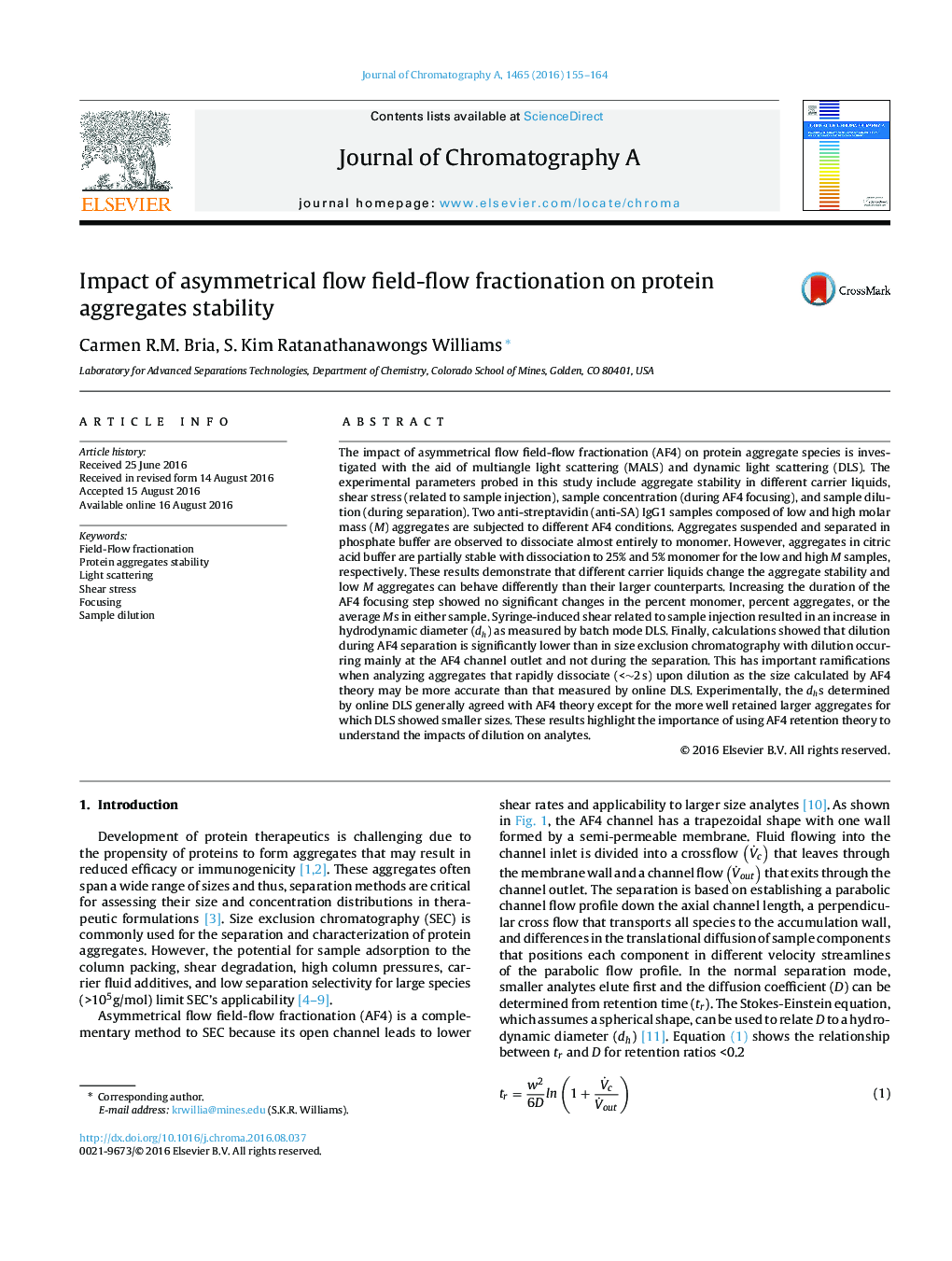| کد مقاله | کد نشریه | سال انتشار | مقاله انگلیسی | نسخه تمام متن |
|---|---|---|---|---|
| 5135955 | 1493461 | 2016 | 10 صفحه PDF | دانلود رایگان |
• Stability of aggregate species is observed to be molar mass and size dependent.
• Syringe shear stress is not detectable using AF4-MALS, but is observed by batch-mode DLS.
• The focusing step, unique to AF4, does not impact anti-SA IgG aggregates stability.
• Dilution in AF4 is shown to be significantly lower than widely perceived.
• AF4 theory may provide more accurate sizes for weakly bound aggregates than online DLS.
The impact of asymmetrical flow field-flow fractionation (AF4) on protein aggregate species is investigated with the aid of multiangle light scattering (MALS) and dynamic light scattering (DLS). The experimental parameters probed in this study include aggregate stability in different carrier liquids, shear stress (related to sample injection), sample concentration (during AF4 focusing), and sample dilution (during separation). Two anti-streptavidin (anti-SA) IgG1 samples composed of low and high molar mass (M) aggregates are subjected to different AF4 conditions. Aggregates suspended and separated in phosphate buffer are observed to dissociate almost entirely to monomer. However, aggregates in citric acid buffer are partially stable with dissociation to 25% and 5% monomer for the low and high M samples, respectively. These results demonstrate that different carrier liquids change the aggregate stability and low M aggregates can behave differently than their larger counterparts. Increasing the duration of the AF4 focusing step showed no significant changes in the percent monomer, percent aggregates, or the average Ms in either sample. Syringe-induced shear related to sample injection resulted in an increase in hydrodynamic diameter (dh) as measured by batch mode DLS. Finally, calculations showed that dilution during AF4 separation is significantly lower than in size exclusion chromatography with dilution occurring mainly at the AF4 channel outlet and not during the separation. This has important ramifications when analyzing aggregates that rapidly dissociate (<∼2 s) upon dilution as the size calculated by AF4 theory may be more accurate than that measured by online DLS. Experimentally, the dhs determined by online DLS generally agreed with AF4 theory except for the more well retained larger aggregates for which DLS showed smaller sizes. These results highlight the importance of using AF4 retention theory to understand the impacts of dilution on analytes.
Journal: Journal of Chromatography A - Volume 1465, 23 September 2016, Pages 155–164
